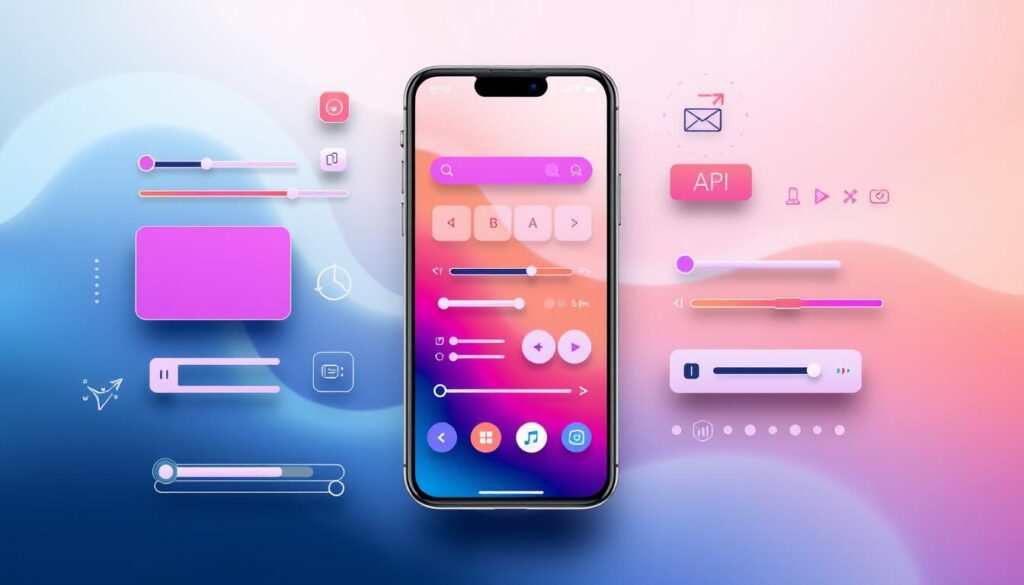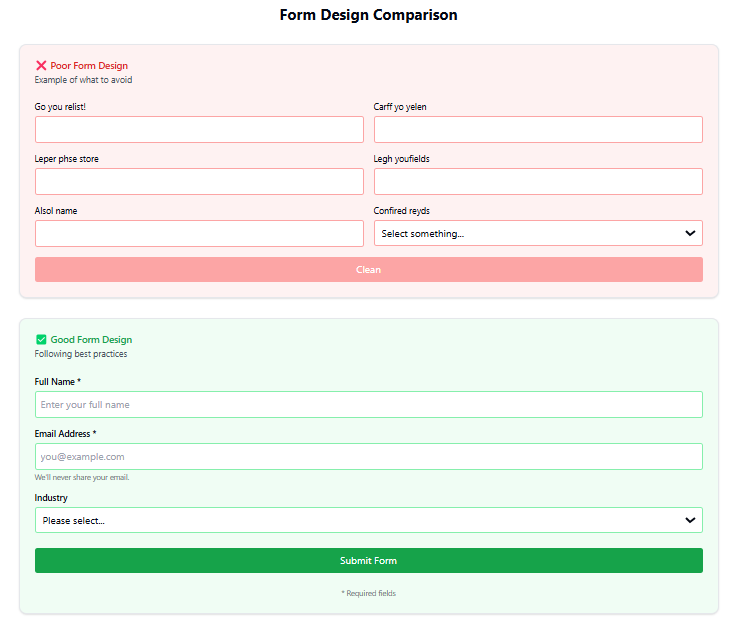90% of junior UX portfolios showcase the same 5 project types. If you’re tired of seeing the same old food delivery and fitness tracking apps in UX portfolios, this will help you.
As a beginner in the field of user experience (UX) design, you have a unique chance to stand out. You can tackle real-world problems that truly make a difference. This article will explore 20 practical, meaningful challenges for you to solve.
These challenges will help you enhance your skills and build an impressive portfolio. Whether you’re aspiring to become a UX designer or want to add user-centric practices to your current role, these 10 real-world UX problems you can solve as a beginner will give you hands-on experience. You’ll develop essential UX design competencies by improving user interfaces and enhancing digital products.
Key Takeaways
- Explore 10 real-world UX problems that beginners can tackle to build a robust portfolio.
- Gain hands-on experience in user experience design and develop essential UX skills.
- Differentiate your UX portfolio by addressing practical challenges beyond the typical food and fitness apps.
- Contribute to the enhancement of user interfaces and digital products through your UX solutions.
- Showcase your ability to tackle real-world UX case studies and UX design challenges.
The Importance of Hands-On UX Learning
Want to be a UX pro? You need to get your hands dirty. Start with this end-to-end ux design course, beginner ux projects and real-world ux case studies. This way, you learn to design with users in mind, do research, and solve problems.
Why Practical Experience Matters
Practical experience makes your book smarts real. You’ll face challenges, make smart choices, and get better at practical ux skills. This prep helps you shine in the job world.
Building a Strong UX Portfolio
A great ux portfolio shows off your skills. Use case studies to show your problem-solving and design skills. Projects help build a portfolio that shows your growth and wins.
“The best way to learn UX design is by doing it. Practical experience is the key to developing the skills and confidence you need to succeed in the field.”
Being a UX pro takes time and effort. Grab every chance to learn and grow your ux portfolio building. With hard work and a love for learning, you’ll have a rewarding UX career.
10 Real-World UX Problems You Can Solve As A Beginner (With Examples)
As a beginner in UX design, you get to solve many real problems. This helps you get better and build a great portfolio. You’ll make digital products better for everyone.
Here are 10 UX problems for beginners, with examples:
- Make websites easier to navigate by organizing menus well.
- Make mobile sites better by fixing layout and touch issues.
- Make buying things online easier by fixing payment and cart problems.
- Make forms easy to use by cutting down on fields and making labels clear.
- Write product descriptions that grab attention and are easy to read.
- Make important info easy to find by organizing it well.
- Make sites more accessible for everyone by following WCAG rules.
- Do user research to find out what people need and want.
- Add cool micro-interactions to make sites more fun to use.
- Make search better by finding the right words and giving good suggestions.
By solving these problems, you’ll get better at UX design. You’ll make digital products and user experiences better. Take on these challenges and become a great UX designer.
“UX design is not just about making things look pretty; it’s about solving problems and creating delightful experiences for users.”
As a beginner, you can learn by doing and show off your skills. Take these chances and let your love for making things better show.
Improving Website Navigation
Making your website easy to use is key for enhancing digital products. It helps visitors move smoothly through your site. By improving user interfaces, you make it simple for users to find what they need.
Enhancing User Flows
One big ux design challenge is making user flows easy. Think about what your visitors want to do. Then, make your menus and links match their needs.
Put important pages first. Make sure users can move easily between related pages.
Creating Intuitive Site Maps
A good site map is the start of great navigation. Organize your content well. Group similar pages together.
Use visual helpers like breadcrumbs. They help users see where they are and where to go next.
“Effective navigation is the backbone of a great user experience. When users can easily find what they’re looking for, they’re more likely to engage with your content and take the desired actions.”
By improving user interfaces, enhancing digital products, and tackling ux design challenges, you make your website better. It will please your users and help you get more from your site.
Optimizing Mobile Experiences
The digital world keeps changing. We must focus on making mobile experiences better. More people use their phones and tablets to access content. So, making things easy to use on small screens is a big challenge.
One big challenge is making content easy to find and use on the go. This means making layouts fit different screens well, using easy touch gestures, and organizing content clearly.

Another key thing is making digital products fast and smooth. Slow sites and apps can make users unhappy and leave quickly. By making images smaller and using smart coding, we can make things look good and work fast.
To improve mobile experiences, we need to know what users like and don’t like. By studying users, testing designs, and making changes, we can make digital products that meet mobile users’ needs and give them a great experience.
Enhancing Checkout Processes
Making checkout easy is key to getting more customers. By improving how things look and work, you can make shopping smoother. This helps keep more people from leaving their carts behind. Let’s look at ways to make your checkout better and keep customers happy.
Simplifying Payment Gateways
A hard-to-use payment area can scare off buyers. Here are some tips to make it easier:
- Give many ways to pay, like cards, digital wallets, and mobile payments.
- Use fewer steps and fields to buy, making it easier and nicer for users.
- Give clear steps for paying, so customers don’t get lost or leave.
Reducing Cart Abandonment
Many people leave their carts behind, which hurts your sales. Here’s how to keep them from leaving:
- Make Guest Checkout Easy: Let people buy without signing up, which some like better.
- Show Clear Prices: List all costs, like taxes and shipping, upfront so buyers know the total.
- Offer Flexible Shipping: Give choices like fast or free shipping to meet different needs.
“By making payments simple and keeping carts full, you can make buying easier and more fun. This can help your business grow and make more money.”
Designing User-Friendly Forms
Improving user interfaces and digital products starts with good form design. Forms are key to a great user experience. By making forms easy to use, you help your users.
Streamlining Form Fields
To make forms better, focus on fewer fields. Only ask for what you really need. This keeps users happy and avoids frustration.
Think about how you arrange fields. Make it easy to follow. This makes filling out forms a breeze.
- Minimize the number of form fields to the essentials
- Organize form fields in a clear and logical manner
- Use clear and concise field labels to help users understand what information is required
- Provide helpful hints or tooltips to guide users through the form-filling process
- Ensure that form fields are easy to navigate and fill out on both desktop and mobile devices
By following these tips, you can make your forms better. This improves your users’ experience and helps your digital products succeed.

“A well-designed form can make a significant difference in the overall user experience and can ultimately lead to increased conversions and customer satisfaction.”
Crafting Engaging Product Descriptions
Writing good product descriptions is key to making digital products better. It’s about showing off what makes your product special. This way, you tell customers why they should buy from you.
Highlighting Key Features
When you talk about your products, focus on the best parts. Use bullet points to make it easy to read. Don’t give too much info at once. Stick to what’s most interesting to your customers.
Maintaining Clarity and Conciseness
Being clear and to the point is important. Use simple words that everyone can understand. Make sure to get your message across quickly and clearly.
“The best product descriptions strike a balance between informative and persuasive, captivating the reader and guiding them towards a purchase decision.”
Learning to write great product descriptions can really help. It makes your digital products better and solves ux design challenges. Always listen to what users say and use their feedback to make your descriptions even better.
Conclusion
By solving these 10 real-world UX problems, you can learn a lot. You’ll build a great UX portfolio. This shows you can make things easy for users.
These projects help you get better at making websites easy to use. You’ll also learn how to make mobile apps better. Plus, you’ll get good at writing product descriptions that grab people’s attention.
Start these beginner UX projects and real-world UX case studies. They’re a great way to make digital products better. You’ll also show off your practical UX skills and love for making things easy for users.
Even though there will be tough UX design challenges, you can do it. Just be dedicated and eager to learn. Then, you’ll become a skilled UX pro.
So, dive into these 10 UX problems you can solve as a beginner. Learn by doing, build your UX portfolio, and let your love for user experience design show. The journey might be hard, but the joy of making great digital experiences is worth it.
FAQ
What are some real-world UX problems that beginners can solve?
Beginners can solve many UX problems. You can make websites easier to use. Or make mobile experiences better.
You can also make checkout easier. Or design forms that are easy to use. And write product descriptions that grab attention.
Why is hands-on UX learning important?
Learning by doing is key for UX skills. It helps you apply design principles and conduct research. You’ll learn to solve real problems.
Having a portfolio of your work shows what you can do. It helps you get jobs or clients.
How can I improve website navigation for users?
To make websites easier to use, focus on user flows. Create site maps that are easy to follow. Make sure browsing is smooth.
Streamline information and menus. Guide users to what they need quickly.
What are some strategies for optimizing mobile experiences?
For better mobile experiences, use responsive design. Improve touch interactions and make content easy to find. Design for small screens and focus on what’s important.
Make your mobile interface easy to use.
How can I enhance the checkout process for users?
To make checkout better, simplify payments and streamline the process. Reduce cart abandonment. Make forms easy to fill out.
Use clear indicators and ensure payments are secure.
What are some tips for designing user-friendly forms?
For easy forms, reduce fields and improve layout. Make labels clear and data entry simple. Minimize fields and give clear instructions.
Make the form experience smooth.
How can I craft engaging product descriptions?
To write great product descriptions, highlight key features. Keep it clear and concise. Show the product’s value.
Use compelling language and show what makes it special. Make it easy to read and look at.









